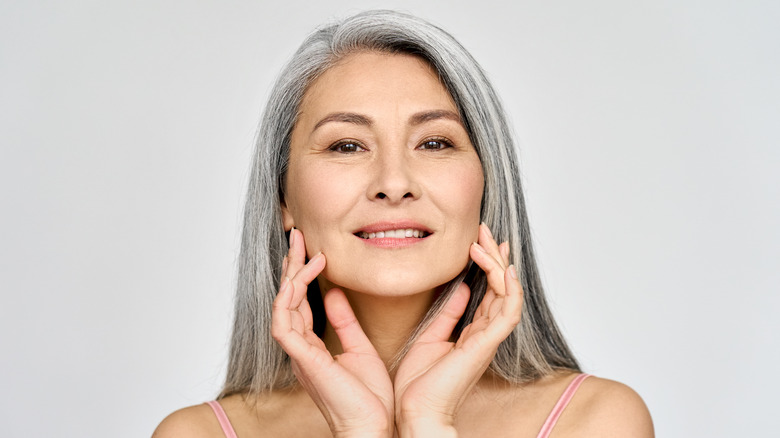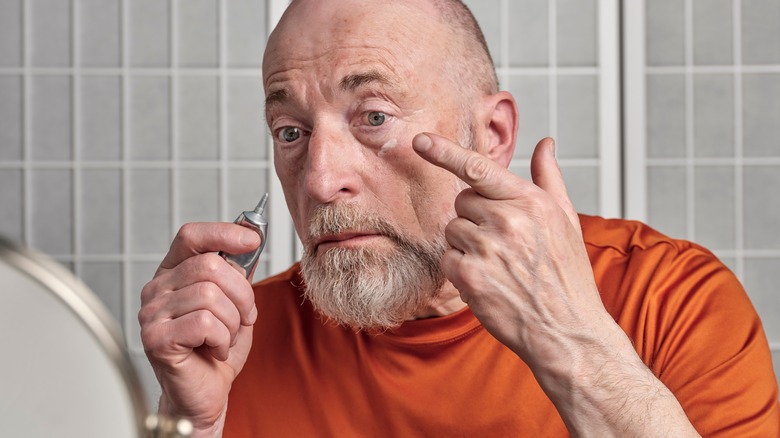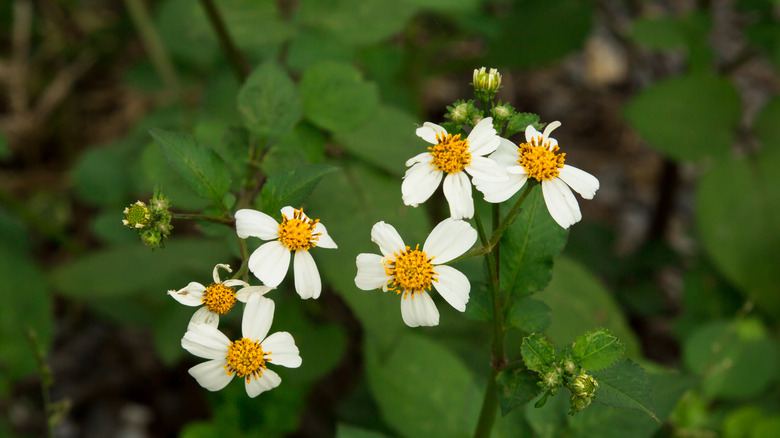If You Have Sensitive Skin, Here Is The Retinol Alternative You Should Try
If your battle with aging skin has begun, so too, no doubt, has your education about retinol. As a derivative of vitamin A, the ingredient can be found in a huge array of skincare products, from cleansers and facial masks to eye creams and facial serums. Perhaps the best news of all to bookmark? Studies consistently show that, with regular and proper use, retinol really works to treat fine lines, wrinkles, uneven skin tone, and sun spots (via Healthline). Retinoids, meanwhile, are similar but stronger and usually require a prescription. Retinoids are particularly effective at treating acne and acne scars, the Cleveland Clinic says. One oft-quoted retinol study published in the Journal of Cosmetic Dermatology reported that participants showed a "significant reduction in facial wrinkles following 12 weeks of retinol application."
The study generated attention for also explaining how retinol makes this happen. More than a topical treatment that merely sits on the skin, it goes deep to penetrate both the outer layer of skin (the epidermis) and the middle layer (the dermis) to neutralize the free radicals that can wreak havoc with the skin. Despite these obvious strengths, retinol has its drawbacks, too. And if you have sensitive skin, you should be extra vigilant to learn about them and consider what many people are touting as a better alternative to retinol. In time, this rival could even outfox retinol with its own strategy.
Retinol goes deep
Rest assured that retinol is approved by the Food and Drug Administration. But most people need time to adjust to it, and people with sensitive skin need to be extra cautious. Retinol can cause side effects like redness and peeling. The skin can also itch or burn — conditions that often surface soon after application but are "usually temporary" in nature, the Cleveland Clinic says. To mitigate these effects, the American Academy of Dermatology recommends that people ease their way into using retinol — applying it not daily but every other day, at least to start.
Other proactive steps can help you manage retinol's side effects, too. Most important: scan the ingredients labels on other skincare products you may be using and use only one product containing retinol at a time. When you do, make sure you don't rush the process. After you wash your face, wait about 30 minutes so your face can dry before applying retinol (via Healthline). Then, wait another 20 minutes for it to absorb into your skin before following up with another skincare product, like moisturizer.
Applying an SPF 30 sunscreen is the crowning touch — a step you're most likely taking anyway if you have sensitive skin. All things considered, only you can decide whether these precautionary measures are too burdensome. Many people have already made their decision and are turning to what Bath Spa Skincare calls "a natural alternative with a retinol-like effect."
Consider Bidens pilosat
The alternative is known as Bidens pilosa, which is actually a plant found in South America and tropical areas around the world, according to research published in the medical journal Evidence-Based Complementary and Alternative Medicine. People there who practice or believe in traditional medicine use it for an array of physical conditions, from healing insect bites, wounds, and hemorrhoids to treating ulcers, hepatitis, and even cancer.
She Knows says that Bidens pilosa "treats signs of aging while helping calm the skin and boost luminosity." It seems to accomplish this by addressing both the intrinsic (internal and genetic) factors of aging as well as the extrinsic factors (caused mostly by external influences, like smoking and pollution). What's more, the research in Evidence-Based Complementary and Alternative Medicine calls Bidens pilosa an "innovative active ingredient ... that controls intrinsic and extrinsic human skin aging."
This so-called "natural retinoid," extracted from a plant, may be worth trying. But like any new product, you should test it on your skin first. The American Academy of Dermatology recommends applying a product containing Bidens pilosa to a "quarter-sized spot" of skin in a nondescript area, like the back of your arm. Leave it on for as long as the instructions advise. If no redness or irritation occurs within 10 days, consider it safe to use the product on your face, as directed. (If you do register a reaction, wash off the product and don't use it again.) As you may know, most battles often require a change in strategy. In your battle with aging skin, Bidens pilosa may represent yours.


